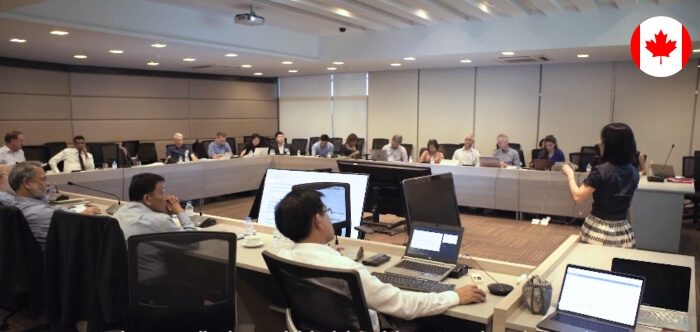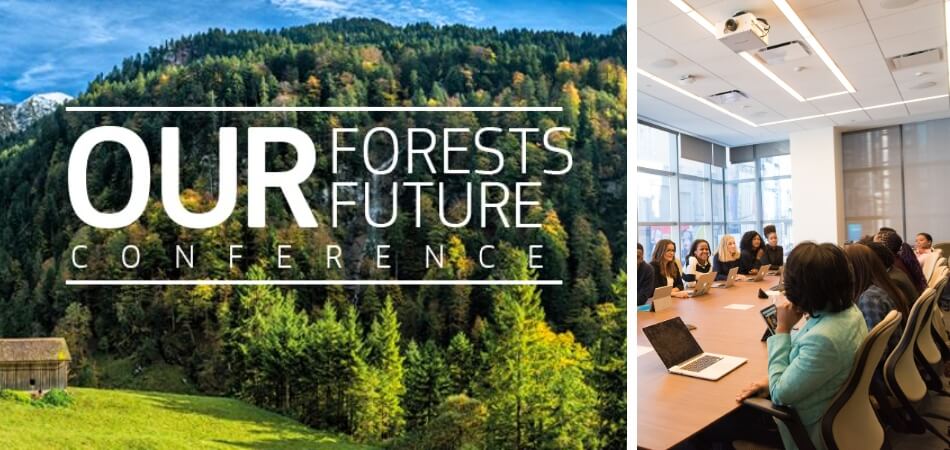The Forestry Conference is an annual event that brings together forestry professionals and enthusiasts. It’s a vital gathering that fosters collaboration and shares knowledge in this evolving industry. But what to expect from forestry conference?
The Forestry Conference offers valuable insights into industry trends, sustainable practices, networking opportunities, and expert speakers. It becomes a beacon, making it a must-attend event for forestry professionals who are fervently seeking knowledge and avenues for collaboration.
In this blog, we’ll explore what the Forestry Conference has to offer. From industry trends and sustainable practices to networking and expert insights, it’s a valuable experience for anyone in forestry. Let’s discover what to expect together.
Quick Overview of Forestry Conference
The Forestry Conference stands as a peak event for professionals deeply involved with forests and sustainable practices. Rooted in its commitment, the conference unfolds the newest trends, driving the industry towards a brighter future. Attendees benefit immensely, gaining insights that resonate with global best practices.

One of the conference’s most significant offerings is its lineup of influential speakers, all recognized leaders in forestry. These experts share transformative techniques, research findings, and tools that cater to modern forestry challenges. Networking opportunities further enhance the experience, fostering strong connections among peers and experts alike.
Beyond the technical and networking prospects, the Forestry Conference places a strong emphasis on sustainability. It encourages attendees to integrate environmentally conscious methods into their practices. As a result, it doesn’t just shape the industry’s present but also carves a more sustainable path forward.
Types of Forestry Conference
Forestry conferences are gatherings that foster learning and collaboration within the industry. They cater to different aspects and interests. Here’s a glimpse into the diverse types of forestry conferences one might encounter:
Silviculture Conferences
These events focus on the art and science of tree growth and forest development. Experts discuss techniques, innovations, and best practices in forest cultivation and management. Such conferences play a pivotal role in forest regeneration and sustainability. Attendees walk away with a deeper understanding of tree lifecycle management.
Urban Forestry Conferences
Urban forestry emphasizes the role of trees in urban settings. These conferences explore the benefits, challenges, and strategies of integrating trees into city landscapes. Discussions often revolve around the balance between urban development and green spaces. The goal is to enhance city living while respecting nature.
Forest Health and Biodiversity Conferences
These conferences delve into the health of forests and their biodiversity. Participants learn about potential threats, conservation methods, and biodiversity’s importance to forest ecosystems. Ensuring forest health is vital for both ecological balance and human livelihoods. Here, the emphasis lies on protection and preservation.
Forest Policy and Economics Conferences
The intersection of forestry with economics and policy is explored here. Attendees discuss the impact of regulations, market trends, and economic factors on forestry practices. They also look into the socio-economic value of forests. Crafting sound policies ensures sustainable and profitable forestry.
Agroforestry Conferences
Agroforestry conferences explore the combination of agriculture with forestry. Attendees learn about practices where trees are grown alongside crops or pastures. It’s a sustainable approach that benefits both the environment and farmers. Techniques shared often focus on maximizing land use while preserving soil health.
Forest Technology and Innovation Conferences
The role of technology in modern forestry is undeniable. These conferences spotlight the latest tools, software, and innovations enhancing forestry practices. From drones to advanced monitoring systems, the fusion of tech and forestry offers exciting prospects. Attendees are introduced to tools that revolutionize traditional practices.
The variety of forestry conferences ensures that every aspect of the industry is addressed. Whether one’s interest lies in urban planning, health, or technology, there’s a conference tailored to that niche. It’s a testament to the multifaceted nature of forestry and its importance in today’s world.
What to Expect from Forestry Conference?
Forestry remains a vital field, influencing both environmental and economic landscapes. As experts and enthusiasts gather, one might wonder what to expect from forestry conference. Here’s a comprehensive guide to the offerings:

In-depth Learning Sessions
These sessions are the heart of the conference. Knowledgeable speakers share research findings and practical experiences. Attendees gain new perspectives on forestry challenges and solutions. It’s a space for learning directly from industry pioneers.
Sustainable Practices Showcase
Sustainability stands central to modern forestry. The conference introduces participants to the latest sustainable practices. These practices emphasize the balance between economic and environmental needs. Sharing such knowledge ensures forests thrive for future generations.
Networking Opportunities
One of the key benefits is professional networking. Attendees meet peers, mentors, and potential collaborators from around the world. These connections can lead to partnerships, projects, or employment opportunities. It’s a melting pot of talent and expertise.
Technological Innovations
The field of forestry is ever-evolving with technology. Innovative tools and software are showcased at the conference. These advancements aid in monitoring, analysis, and forest management. Embracing technology ensures efficiency and precision in forestry tasks.
Policy and Economics Discussions
Understanding the larger framework is crucial. Discussions around forest policies, regulations, and economic trends are frequent. They shape the direction in which forestry moves in different regions. Such dialogues ensure that the industry adapts and thrives amidst changing scenarios.
Hands-on Workshops
Beyond talks and presentations, there are interactive sessions. Workshops provide hands-on experiences with new tools or techniques. Participants get a feel for practical aspects of theoretical knowledge. It bridges the gap between learning and application.
A forestry conference is more than just a series of talks. It’s a holistic experience, offering a blend of theoretical knowledge, practical insights, networking, and hands-on experiences. For anyone keen on understanding and shaping the future of forestry, these conferences are invaluable events to mark on the calendar.
How These Workshops Impact On Environment?
Workshops often act as catalysts for change, especially concerning environmental issues. By offering hands-on experiences and knowledge sharing, they directly influence eco-friendly practices. Here’s how these workshops leave a mark on the environment:

Raising Awareness
Workshops spotlight crucial environmental concerns. They present data, case studies, and real-life scenarios. By doing so, they foster a deeper understanding of pressing ecological challenges.
Promoting Sustainable Practices
Sustainability stands as a key workshop theme. Participants learn about green methods, tools, and strategies. Such knowledge equips them to adopt and promote eco-friendly behaviors in their communities.
Enhancing Skills and Techniques
Hands-on sessions hone practical skills. They introduce attendees to advanced, environmentally-conscious techniques. Mastering these ensures that professionals minimize negative impacts while maximizing positive outcomes.
Encouraging Innovation
Workshops often serve as brainstorming platforms. Participants collaborate, ideate, and propose innovative environmental solutions. Such collective creativity can lead to groundbreaking ideas for eco-conservation.
Building Collaborative Networks
Networking is an intrinsic workshop component. Attendees connect with like-minded individuals, organizations, or stakeholders. These relationships can fuel collaborative projects aimed at environmental betterment.
Workshops are not mere gatherings; they’re transformative experiences. They mold perceptions, enrich knowledge, and amplify efforts toward a greener, sustainable future.
Pros and Cons of Attending Forestry Conferences
Forestry conferences provide a platform for professionals and enthusiasts to converge, learn, and network. While they offer numerous benefits, there are also some downsides worth considering. Here are the pros and cons:
Pros
- Rich Learning Experience: Gain insights into the latest research, technologies, and practices shaping the forestry sector.
- Networking Opportunities: Connect with experts, potential collaborators, and other professionals from around the world.
- Hands-on Workshops: Engage in practical sessions that bridge the gap between theory and real-world application.
- Stay Updated: Learn about emerging trends, threats, and opportunities in the forestry domain.
- Influence Policy and Practices: Engage in discussions that can shape future forestry policies and regulations.
- Career Advancement: Discover potential job opportunities, partnerships, and projects.
- Sustainable Focus: Emphasize and learn more about the importance of sustainable practices in the forestry sector.
Cons
- Cost Implications: Attending can be expensive, considering registration fees, travel, accommodation, and other related expenses.
- Time-Consuming: Dedication of several days can be challenging for those with tight schedules.
- Environmental Footprint: The travel and resources used for hosting large conferences can have an environmental impact.
Weighing these pros and cons can help individuals decide the value and relevance of attending a forestry conference based on their personal and professional objectives.
Bottom Line
Conferences on forestry are more than just gatherings of people; they’re doors to an unlimited supply of information. These conferences highlight the most recent discoveries, innovations, and the fundamentals of sustainability in the industry. They are the go-to resources for anyone new to the field who wants to know what’s going on in contemporary forestry.
When you ponder what to expect from forestry conference? Think of it as a blend of learning, networking, and hands-on experiences. These events are tailored to offer both seasoned professionals and newcomers a deep dive into industry trends and practices.
These conferences aren’t just about today; they’re about shaping tomorrow. They ensure that everyone involved walks away with a clearer vision for a green, sustainable, and informed future in forestry.





